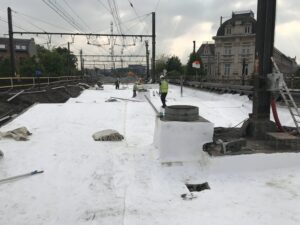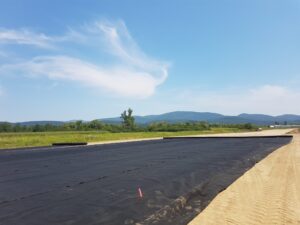Railways form an integral part of our global infrastructure network and are an indispensable part of the mobility solution for both people and material transport. Maintaining a highly functional railroad system and establishing new railroads in the most efficient way is vital in the transport infrastructure sector.
Geotextiles can be a cost-effective and very efficient part of railroad construction or rehabilitation.
When used in railway construction, geotextiles are typically placed between the different layers of the construction, such as the subgrade, which is the layer of soil or rock beneath the track bed, and the soil. They act as a separation layer, preventing the mixing of different soil types and helping to maintain the stability of the track bed. Geotextiles also help to improve drainage and reduce the risk of erosion by allowing water to pass through the fabric while keeping the soil in place.
When a separation layer is to be installed directly underneath the ballast layer, the abrasive forces of the ballast in combination with the train movement need to be taken into account. A standard geotextile will puncture quickly and is not able to withstand these forces. BontexGeo’s RIGIDD geotextile is specifically designed to withstand this abrasion and provide long-term separation and filtration functionality beneath the ballast.
The use of a geotextile will also help prevent the typical pumping effect (caused by compression of a track bed that is not properly drained as the train passes over the track), as it lets water evacuate the track while keeping the soil fines in place. In combination with additional drainage systems such as french drains or geocomposite products, the structural stability will increase significantly.
In addition to these functions, geosynthetics can also be used to reinforce embankments and slopes in railway construction. This is done by placing the geosynthetic behind the embankment and filling it with soil. The geosynthetic helps to keep the soil in place, reducing the risk of landslides and erosion.


